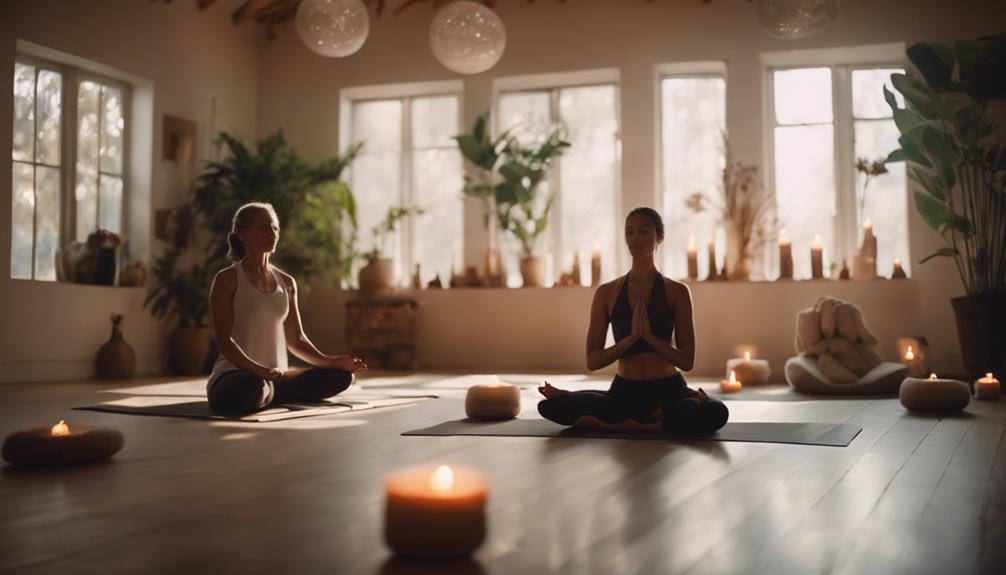Yoga Meditation

Yoga meditation is more than just a trend; it’s a holistic practice that combines the physical and mental benefits of yoga with the mindfulness of meditation. As more people seek ways to reduce stress and improve their overall well-being, yoga meditation has emerged as a powerful tool for achieving inner peace. In this comprehensive guide, we will explore the various aspects of yoga meditation, its benefits, techniques, and how you can incorporate it into your daily life.
Understanding the Basics of Yoga Meditation
Yoga meditation is a practice that integrates physical postures (asanas), breathing techniques (pranayama), and focused attention to enhance mental clarity and emotional stability. Unlike traditional meditation, which often involves sitting still, yoga meditation incorporates movement and breath control, making it accessible to people of all ages and fitness levels. The primary goal of yoga meditation is to cultivate mindfulness and awareness, allowing practitioners to connect with their inner selves and achieve a state of calmness.
The Historical Roots of Yoga Meditation
To fully appreciate yoga meditation, it’s essential to understand its historical roots. Originating in ancient India over 5,000 years ago, the practice has evolved over millennia, influenced by various philosophies and spiritual traditions. The foundational texts of yoga, such as the Yoga Sutras of Patanjali, outline the principles and practices of yoga meditation. These texts emphasize the importance of self-discipline, concentration, and ethical behavior, which are vital components of a successful yoga meditation practice.
Benefits of Yoga Meditation for Mind and Body
Engaging in yoga meditation offers a myriad of benefits for both the mind and body. Research has shown that regular practice can lead to reduced stress levels, improved concentration, and enhanced emotional well-being. Physically, yoga meditation can increase flexibility, strength, and balance while promoting overall health. Additionally, the combination of movement, breath control, and mindfulness can help alleviate symptoms of anxiety and depression, making it an invaluable tool for mental health.
Related Posts:
Getting Started: Beginner-Friendly Yoga Meditation Techniques
If you’re new to yoga meditation, getting started can feel overwhelming. However, there are several beginner-friendly techniques that can ease you into the practice. One effective approach is to begin with simple yoga poses, focusing on your breath as you move. For instance, you can try the child’s pose, downward dog, or seated forward bend. Once you feel comfortable with the physical aspect, transition into seated meditation. Find a quiet space, sit comfortably, and focus on your breath. Allow thoughts to come and go without judgment, gradually cultivating a sense of mindfulness.
Creating a Dedicated Space for Yoga Meditation
Having a dedicated space for yoga meditation can significantly enhance your practice. Designate an area in your home where you can regularly practice without distractions. This space should be calming and comfortable, filled with items that inspire tranquility, such as candles, plants, or soft textiles. Additionally, consider adding a yoga mat or cushion for comfort during your sessions. By creating an inviting atmosphere, you can foster a deeper connection to your practice and make it a part of your daily routine.
Incorporating Yoga Meditation into Your Daily Routine
To reap the full benefits of yoga meditation, consistency is key. Incorporating it into your daily routine doesn’t have to be time-consuming. Start with just 10-15 minutes each day and gradually increase the duration as you become more comfortable. You can practice in the morning to set a positive tone for the day, during lunch breaks to relieve stress, or in the evening to unwind before bed. The flexibility of yoga meditation allows you to adapt it to your schedule, making it easier to maintain a regular practice.
Common Challenges and How to Overcome Them
Like any new practice, you may encounter challenges while practicing yoga meditation. Common obstacles include a wandering mind, physical discomfort, or difficulty finding time. To overcome these challenges, be patient with yourself and approach your practice with a sense of curiosity. If your mind wanders, gently guide your focus back to your breath or physical sensations. If you experience discomfort, explore different positions or props to enhance your comfort. Lastly, prioritize your practice by scheduling it into your day, just like any other important appointment.
Exploring Advanced Yoga Meditation Practices
Once you’ve established a consistent foundation in yoga meditation, you may wish to explore more advanced practices. Techniques such as mantra meditation, guided visualization, or even integrating chakra work can deepen your experience. Mantra meditation involves repeating a specific word or phrase, which can help to focus the mind and enhance concentration. Guided visualization can transport you to serene landscapes, creating a mental escape from daily stressors. As you explore these advanced practices, remember that the journey of yoga meditation is personal; find what resonates with you and align it with your goals.
Conclusion
Yoga meditation is a transformative practice that offers a wealth of benefits for both the mind and body. By understanding its history, incorporating beginner-friendly techniques, and creating a dedicated space, you can cultivate a fulfilling yoga meditation practice. Embrace the journey and allow yourself to explore the depths of your inner peace. With consistent practice, you’ll not only enhance your physical health but also nourish your mental and emotional well-being. Whether you’re a beginner or an experienced practitioner, yoga meditation is a path worth exploring, leading you closer to the tranquility and balance you seek in life.Does Yoga Help You Lose Weight Reddit